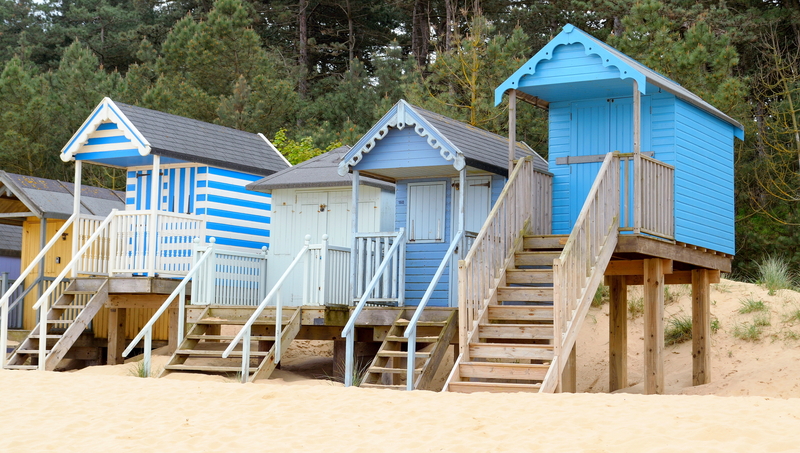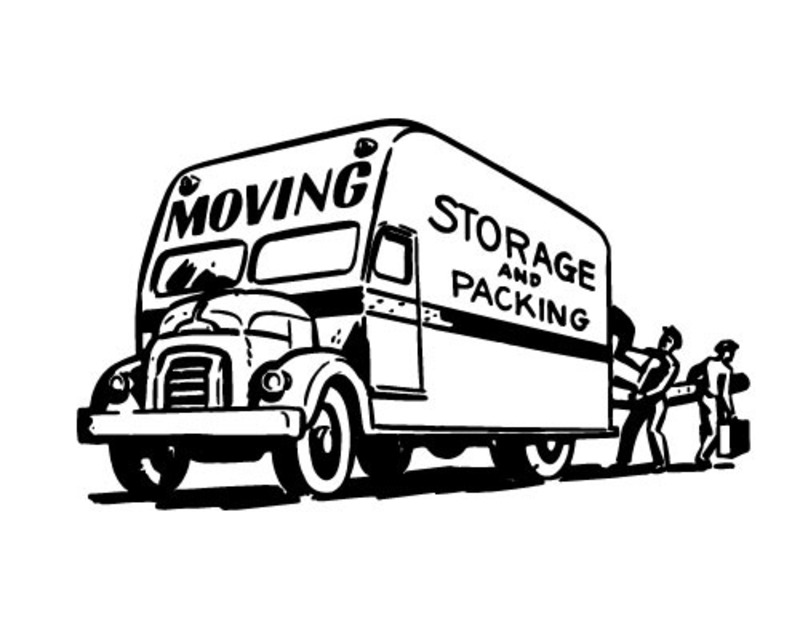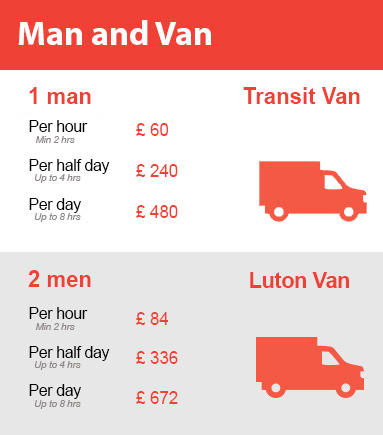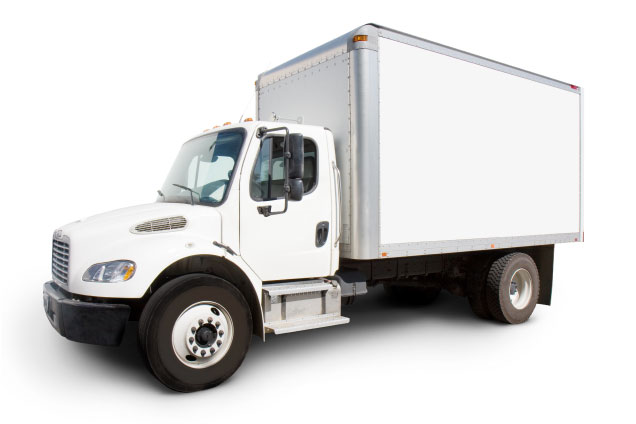Organize Like a Pro: Essential Packing Tips for a Big Move
Posted on 19/05/2025
Organize Like a Pro: Essential Packing Tips for a Big Move
Planning a big move? Whether you're relocating to a new city, upgrading your space, or downsizing, packing for a move can feel overwhelming. However, with the right approach, organization, and proven strategies, you can turn a potentially chaotic experience into a smooth transition. In this comprehensive guide, we'll reveal professional packing tips for moving that will help you stay organized, protect your belongings, and save time. Let's dive into the secrets to organizing like a pro!
Why Efficient Packing Matters
Making sure your packing process is organized makes a huge difference. Not only does it help you save time and energy both before and after your move, but it also protects your valuable possessions and reduces stress. Well-packed items are less likely to get damaged, and an organized moving system means you'll know exactly where everything is when you're ready to settle into your new space.
- Reduces breakage risk during transportation
- Saves time when unpacking in your new home
- Minimizes stress by keeping you in control
- Helps declutter and downsize unwanted items

How to Get Started: Planning for Moving Success
Before you start filling boxes, a little planning goes a long way. Preparation is the foundation of a successful move.
1. Create a Moving Timeline
- 8 weeks before: Research and book your movers, if needed. Start taking inventory of your belongings.
- 6 weeks before: Begin decluttering and donating items you don't need.
- 4 weeks before: Gather moving supplies and start packing non-essential items.
- 2 weeks before: Confirm moving details and continue packing.
- 1 week before: Pack essentials and clean your old home.
2. Set Up a Packing Station
Designate a specific area in your home as your packing headquarters. Keep boxes, tape, markers, bubble wrap, scissors, and labels in this area. This packing station will streamline your process and save time searching for supplies.
Declutter Before You Pack
Packing for a move is the perfect opportunity to declutter. The less you have, the less you'll have to move--and the more organized your new home will be.
- Sort through your belongings room by room.
- Donate or sell items you no longer use or need.
- Dispose responsibly of broken or expired items.
Ask yourself: "Have I used this in the past year?" If the answer is no, it may be time to let it go.
Gather Essential Packing Supplies
A well-organized move starts with the right supplies. Investing in quality packing materials not only secures your items but also speeds up the packing process.
- Sturdy moving boxes in various sizes
- Heavy-duty packing tape and dispensers
- Bubble wrap and packing paper
- Stretch wrap and plastic wrap
- Permanent markers and printed labels
- Scissors and utility knives
- Ziplock bags for small items
- Specialty boxes (wardrobe, dish packs, electronics)
Pro Tip: Don't skimp on packing materials. Weak boxes and thin tape can cause damage and delays.
Packing Like a Pro: Room-by-Room Packing Tips
Breaking the packing process down room-by-room keeps things organized and less overwhelming. Here are top packing tips for moving professionals recommend for each area of the home.
Kitchen Packing Tips
- Use dish packs or double-walled boxes for fragile china and glassware.
- Wrap plates and bowls individually with packing paper or bubble wrap.
- Keep appliances in their original boxes if possible. Fill empty spaces with towels or soft cloths.
- Label boxes as "Fragile" and include a "This Side Up" arrow.
- Pack silverware in trays, and seal with stretch wrap to avoid spillage.
Bedroom Packing Tips
- Leave clothes on hangers and transfer to wardrobe boxes for easy unpacking.
- Pack shoes in shoeboxes or wrap each shoe in paper to prevent scuffs.
- Use under-bed storage boxes for linens, blankets, and seasonal clothes.
- Pack delicate items like jewelry in padded pouches or small containers.
Living Room Packing Tips
- Disassemble large furniture and keep screws or hardware in labeled ziplock bags, taped to the corresponding item.
- Wrap TVs and electronics in anti-static bubble wrap, and pack cords separately in labeled bags.
- Use corner protectors on mirrors and framed art.
- Label cords and remote controls for easier setup in your new home.
Bathroom Packing Tips
- Pack toiletries in sealable bags to prevent leaks.
- Dispose of expired medications safely.
- Wrap glass containers and perfumes in bubble wrap.
- Keep a separate "essentials" bag with a few days' worth of personal hygiene items for the first days in your new place.
Home Office Packing Tips
- Backup computer files before packing electronics.
- Label all device cables and keep them together.
- Use file boxes for important documents.
- Take photos of device setups for easier reassembly.
General Packing Strategies for a Streamlined Move
Applying these effective moving organization tips will further simplify your packing experience:
Label Everything Clearly
- Label each box with its contents and destination room.
- Use color-coded labels or stickers to match boxes with rooms at your new home.
- Number boxes for tracking and reference.
Pack by Category, Not Just Room
- Pack books, electronics, or seasonal items together no matter which room they're in.
- This helps when you need to prioritize unpacking certain categories first.
Pack Heavier Items First
- Place heavier items at the bottom of boxes and lighter, more fragile items on top.
- Keep boxes under 50 pounds to avoid injury and make loading easier.
Use Small Boxes for Heavy Items
- Books, tools, and canned goods should go in smaller boxes for easier transport.
Don't Leave Empty Spaces
- Fill gaps with towels, linens, or packing paper to prevent shifting.
Seal Boxes Securely
- Use strong, reinforced tape on the bottom and top seams of every box.
Packing Fragile and High-Value Items
Certain items require extra care during a big move. These essential packing guidelines reduce the risk of breakage or loss:
- Wrap glassware and ceramics in bubble wrap or foam sleeves.
- Use "glass packs" or cell dividers for cups and stemware.
- Photograph valuables before packing for insurance purposes.
- Transport irreplaceable items--such as passports, legal documents, jewelry, and family heirlooms--in your personal vehicle, not the moving truck.
Essentials Box: Don't Forget the First Night Kit!
Imagine reaching your new home exhausted, only to realize you can't find your toothbrush or phone charger. This is where an essentials box (or first night kit) saves the day.
- Phone chargers and power strips
- Basic toiletries (toothbrush, toothpaste, soap, deodorant)
- Clothing and pajamas for the first few days
- Bed linens and towels
- Medications and important documents
- Cleaning supplies and toilet paper
- Snacks and water
Mark this box clearly and load it last so it's the first thing off the truck.
Moving Day Organization Tips
Your packing organization will pay off on moving day! Here are some strategies to keep things running smoothly:
- Have a floor plan for your new home so movers know where to place boxes.
- Keep pets and children safe in a separate room or with family/friends.
- Check off each box and item as it goes into (and out of) the moving truck.
- Walk through your old home to ensure nothing is left behind.
Unpacking Efficiently: Settling In Smoothly
A pro-level moving strategy doesn't stop at unloading the boxes! Start by unpacking your essentials box, then tackle one room at a time. Reference your labeled and color-coded boxes for quick identification, and set up furniture and key areas (like the kitchen and bedrooms) first.
- Dispose of packing materials as you go to avoid clutter.
- Reassemble furniture and set up electronics using your device photos and labeled cables.
- Take your time--focus on efficiency, not speed, to keep stress down.

Frequently Asked Questions About Packing and Moving
How far in advance should I start packing for a big move?
Start packing non-essential items about 4-6 weeks before your move. The earlier you start, the less rushed and stressful the experience will be.
How can I stay organized while packing?
Keep an inventory sheet, label everything, and pack one room at a time. Use a checklist or moving app to stay on top of progress.
What is the best way to pack fragile items?
Wrap each item individually with bubble wrap or soft materials, use plenty of packing paper, and fill empty spaces in boxes to prevent shifting.
Should I hire professional packers?
If time is tight or you own many valuable items, professional movers offer efficient, secure packing with insurance. For DIY moving, following these well-organized packing tips will help you pack like a pro!
Conclusion: Move Like a Pro--With Less Stress and More Confidence
By applying these proven essential packing tips for moving, you can organize your entire relocation process from start to finish. With careful planning, a strategic approach, and the discipline to declutter along the way, you'll enjoy a more manageable move--and a cleaner, more organized new home.
Ready to take charge of your move? Put these moving organization strategies into practice, and you'll be unpacking in your new home before you know it. Good luck and happy moving!





